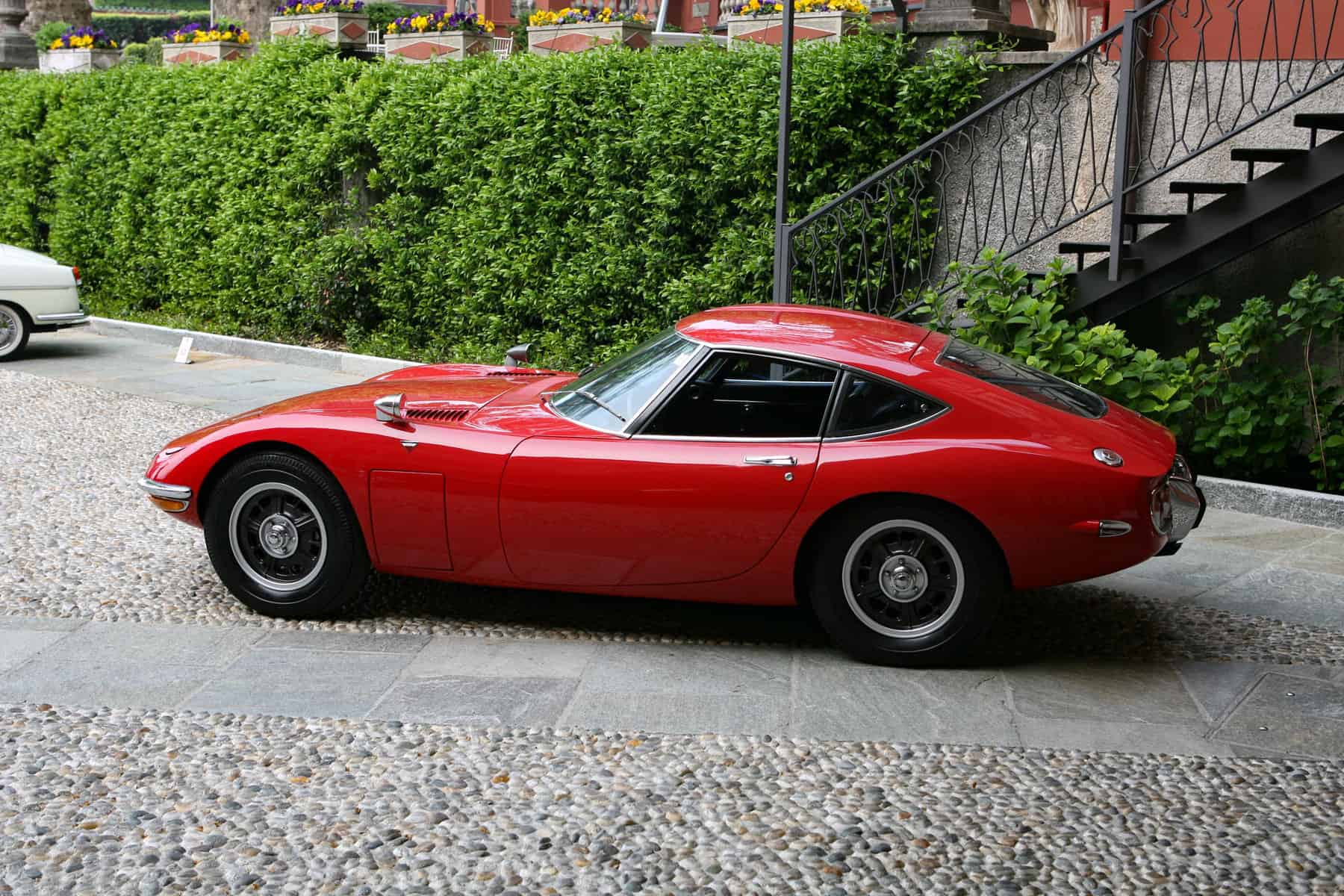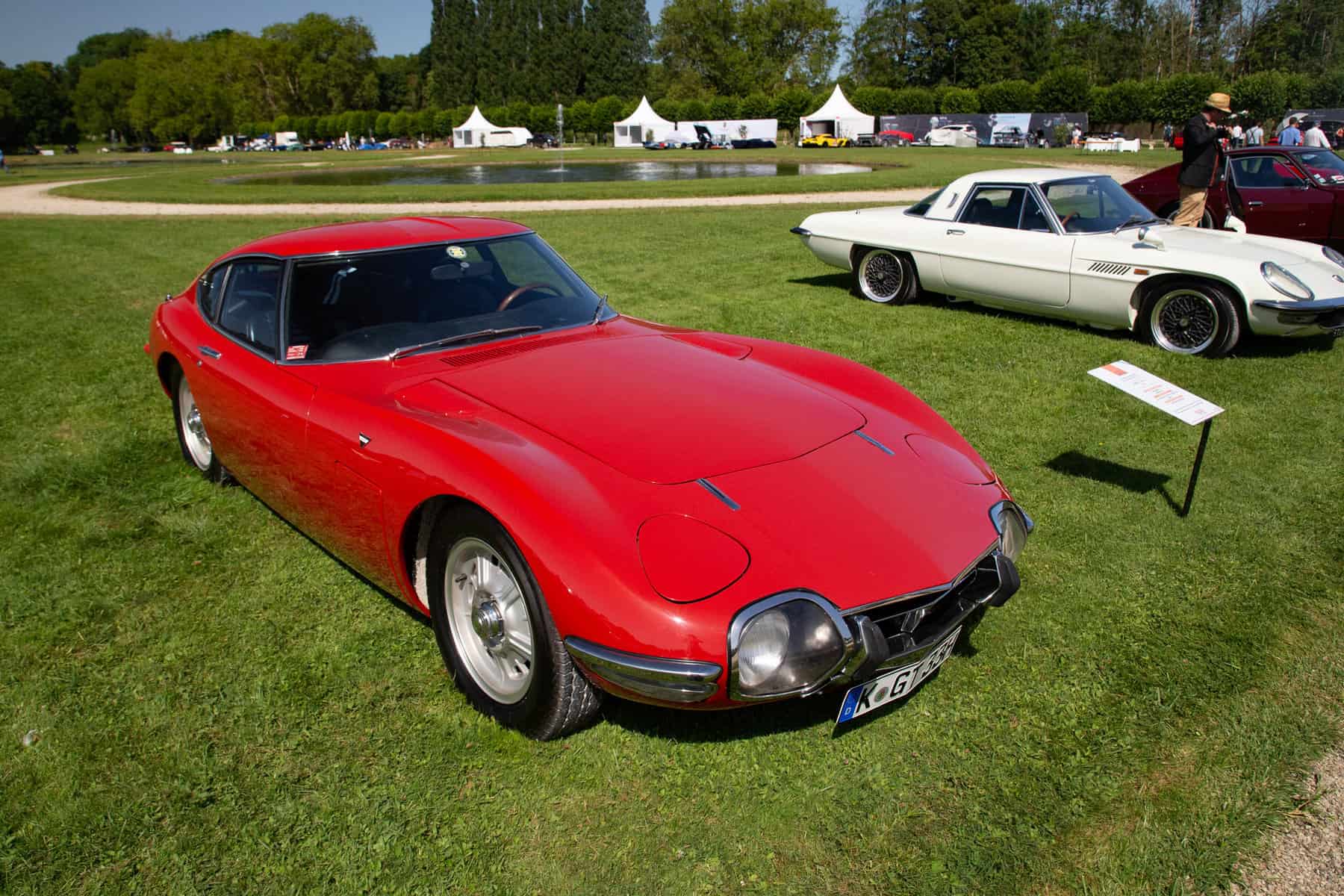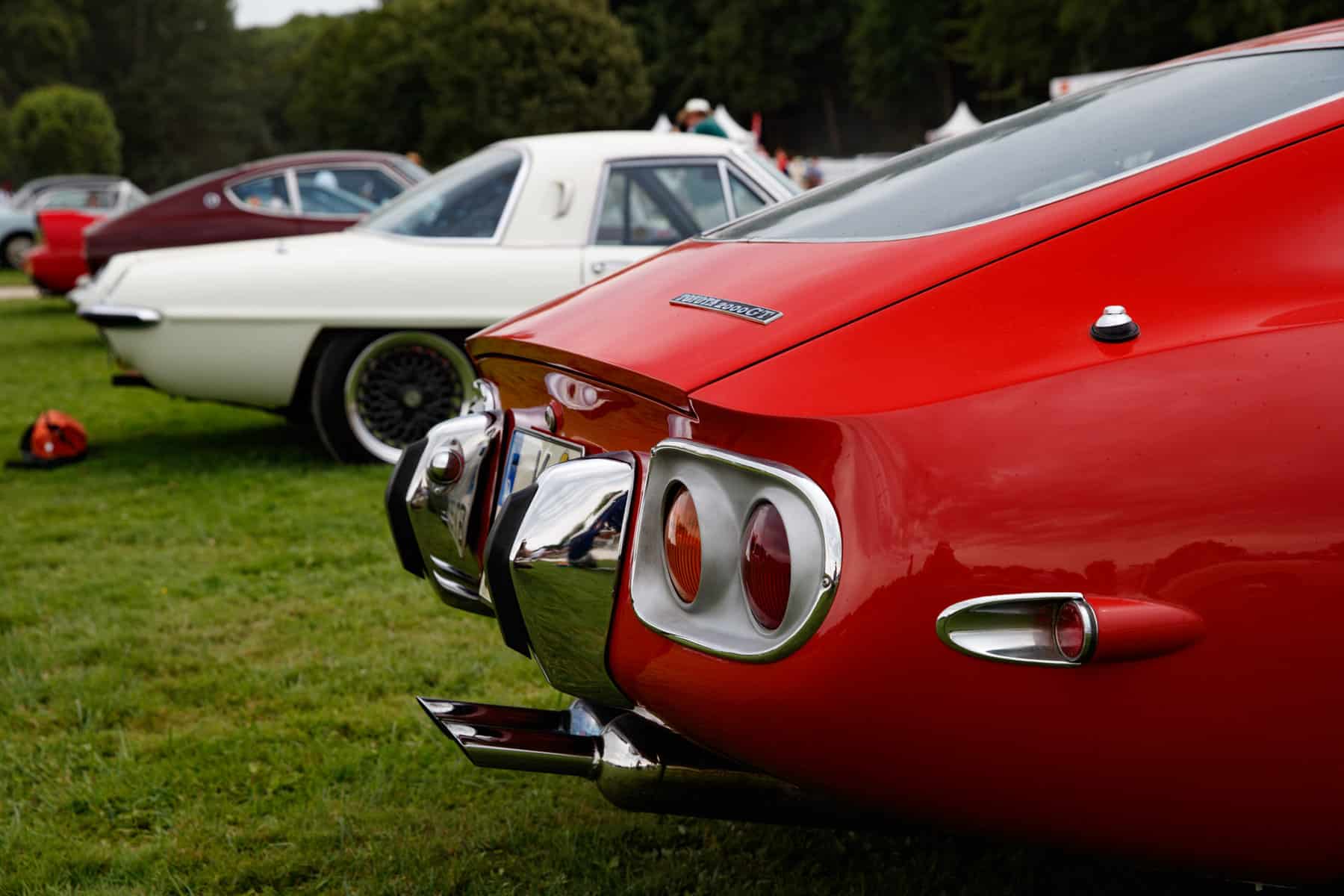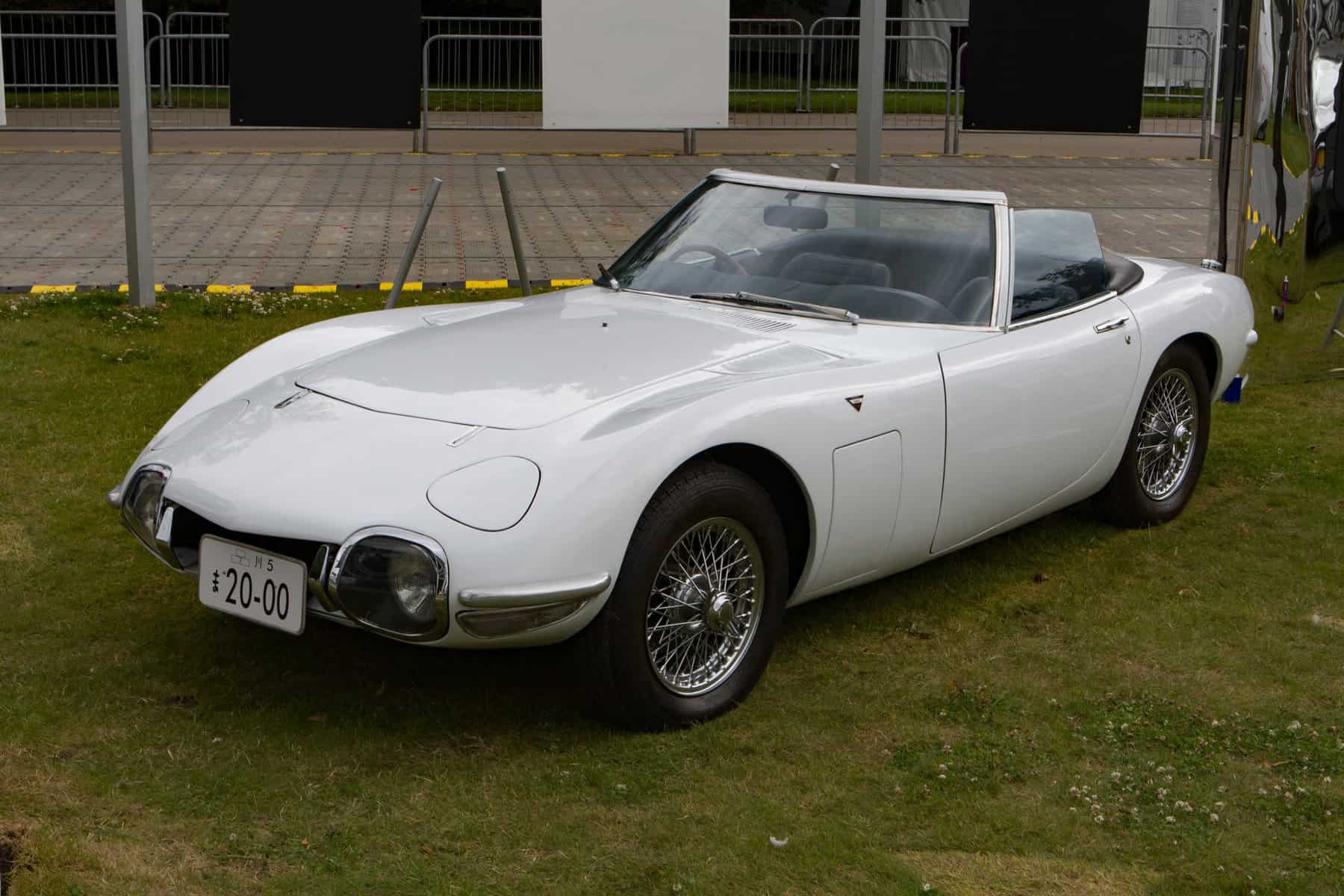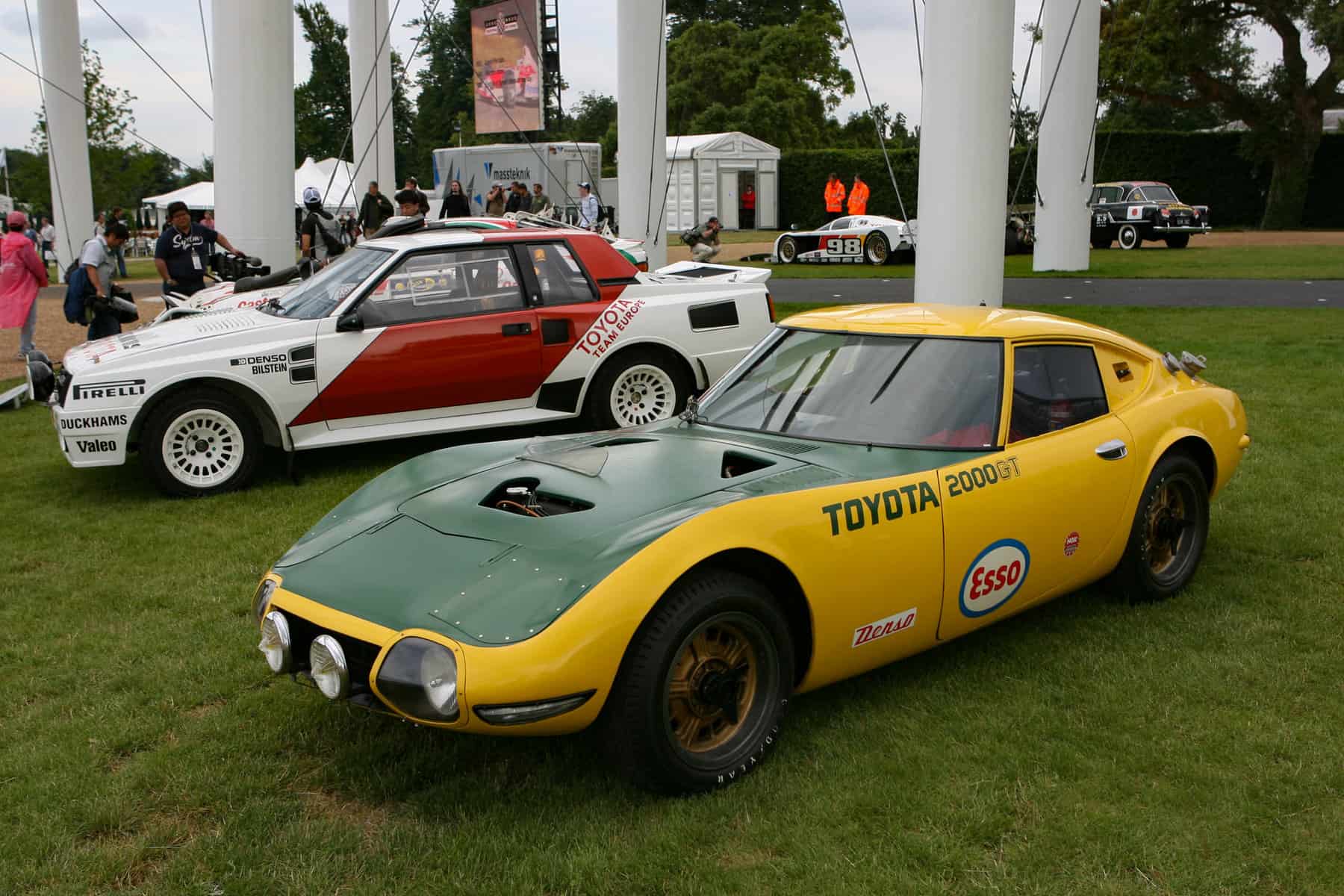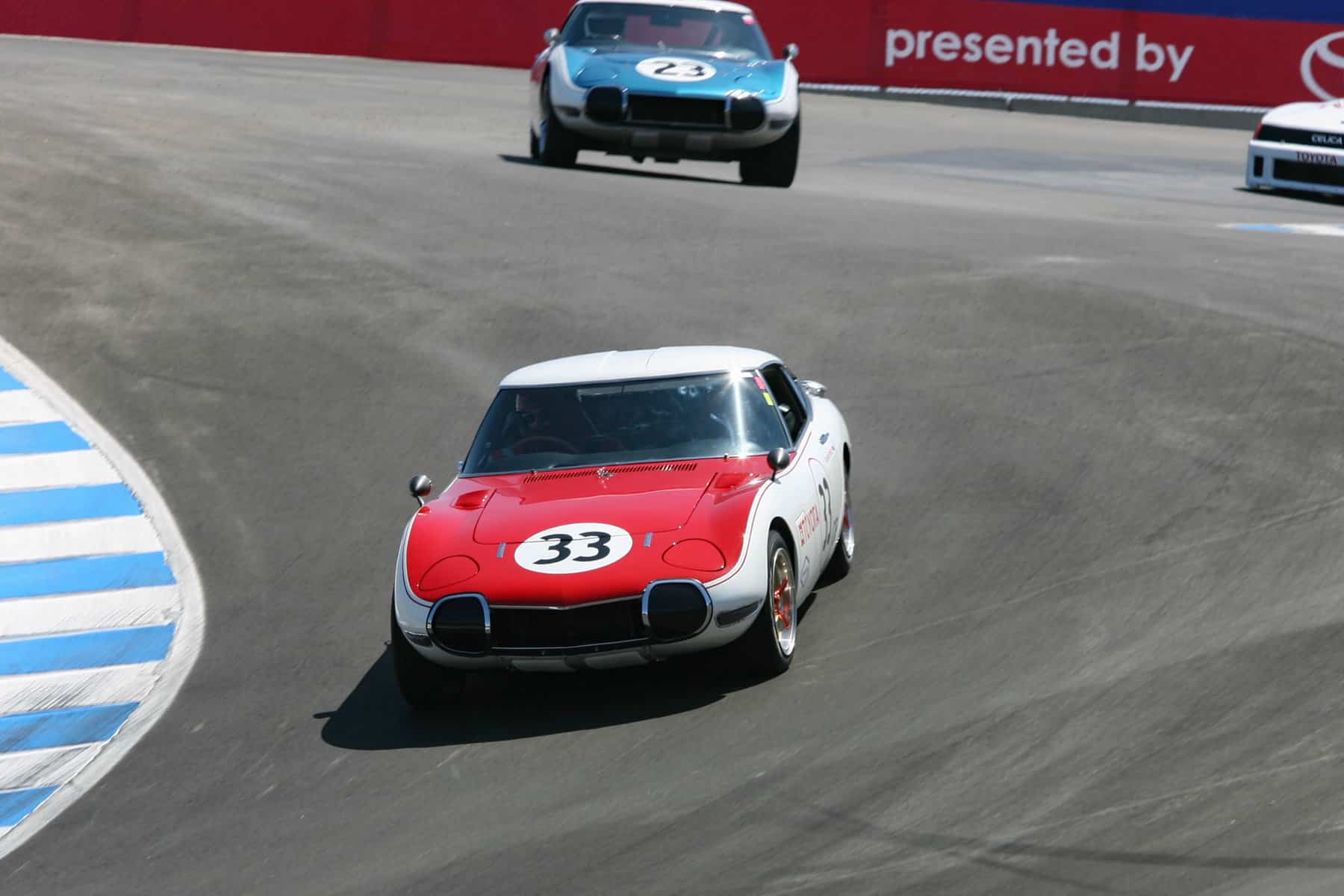Toyota 2000 GT
The birth of the first Japanese supercar
WORDS & IMAGES BY: WOUTER MELISSEN
At the recent Gooding & Company Amelia Island sale, a Japanese car sold for more than two million dollars for the first time.
The car in question, a Shelby-prepared Toyota 2000 GT, was by no means ordinary, but the sale was a reflection of ever-increasing interest in Japanese cars in general and the Toyota 2000 GT in particular. Launched at the 1965 Tokyo Motor Show, the high-performance 2000 GT sports car is generally considered the very first Japanese supercar.
At the time, Toyota’s line-up at the time consisted mainly of sensible four-door sedans like the Crown and the small-displacement 800 Sports coupe. The 2000 GT, on the other hand, was an exuberant showstopper designed to take on the best European and American sports cars. Of all Japanese manufacturers, Toyota was the last company people expected to produce a halo car like the 2000 GT. So it may not come as a surprise that the idea for the 6.0 cylinder-engined machine did not come from Toyota but can actually be traced back to a stillborn Nissan sports car.
Connecting the two projects was the Yamaha Motor Company, which served as a consultant for Nissan during the early 1960s and later also developed and built the 2000 GT for Toyota. Best known for building scooters and motorcycles, Yamaha also tried to branch out to cars in the late 1950s. Several prototypes were built, but this proved such an expensive exercise that the company was in financial difficulties by the early 1960s. In an attempt to make use of the experience gathered creating these four-wheel prototypes, Yamaha started offering its services to other companies like Nissan.
Initially, the work for Nissan included developing smaller parts like the soft-top for the Fairlady sports car. The cooperation was ramped up when Nissan commissioned a fixed-head version of the Fairlady, which would become the Silvia, and an all-new 2.0-liter coupe. In order to give the projects some international flair, the services of German designer Graf Albrecht von Goertz were called in. He had famously penned the BMW 507 Roadster and by the 1960s was consulting for various manufacturers. The “CSP311,” or Silvia, was given priority by Nissan, so Yamaha paused the development of the 2.0-liter coupe in 1963.
While Nissan showed no further interest in the 2.0-liter coupe, Yamaha did pick up development in 1964. A single prototype was eventually constructed, dubbed the Yamaha A550X. It was built around a monocoque chassis with front and rear subframes to house all the mechanicals and suspension. It was powered by a 4.0-cylinder engine, developed in-house by Yamaha. Von Goertz, who had left Nissan in October 1964, designed the exterior, which featured pop-up headlights and a fastback roof. Yamaha then offered the car to Toyota, which showed considerable interest but ultimately also politely refused.
At Toyota, however, a seed had been sown, and the company set about developing a 2.0-liter sports car of its own. Clearly impressed by the A550X, the services of the Yamaha Motor Company were called in to help with what would become the Toyota 2000 GT, known internally as the MF10. Although inspired by the A550X, it was a distinctly different machine. The unitary chassis was discarded and instead, the 2000 GT featured a steel X-frame chassis onto which the separate body was mounted. Double-wishbone suspension with coil springs was fitted on all four corners.
Starting with the Albrecht von Goertz–penned lines as a basis, the exterior was refined by Toyota head of design Satoru Nozaki. The finished design lacked any of the sharp lines of the A550X, instead the aluminium bodywork now had classic, curvaceous lines. As on the Sport 800, covered headlights were fitted on either side of the grille. Additional pop-up headlights were fitted to meet the American regulations for the minimum height of the headlights. The rear-end featured two pairs of circular taillights and twin centrally mounted exhausts. Like the great Zagato designs of the time, the low, fastback roof featured double bubbles to clear the heads of the two occupants.
Yamaha’s most palpable contribution to the 2000 GT was its 2.0-liter straight-six. Based on the Toyota engine that also powered the Crown, it was fitted with a bespoke aluminium alloy, twin-cam cylinder head. Displacing 1,988 cc, it was absolutely square with a 75-mm bore and stroke. Equipped with three Mikuni-Solex carburetors, the twin-cam engine produced 150 hp at 6,600 rpm. Mated to a five-speed manual gearbox, the straight-six was mounted behind the front axle. This gave the car a slight (48/52) rear-weight bias. The rear-end featured a limited-slip differential.
Within eleven months after the project had started, Yamaha completed the first Toyota 2000 GT in August of 1965. Painted white, it made its public debut in the of October, at the Tokyo Motor Show. This was a particularly important event for the country’s domestic manufacturers, as it was the first show after Japan released some of the restrictions on importing foreign automobiles. As such, it was certainly the right time to launch a “halo car,” even for a conservative manufacturer like Toyota. At the same show, Toyota also introduced a 4.0-liter V-8 version of the Crown.
Before the 2000 GT entered series production, it was extensively tested. The work culminated with an entry in the Speed Trials at the Yatabe High Speed Testing Course in October 1966. A specially prepared competition car set thirteen world records during the seventy-two-hour run. The competition car was also raced, finishing third in the 1966 Japanese Grand Prix at Fuji and winning the 24 Hours of Fuji and Fuji 1000 km in 1967. Sadly, the record-setting car was destroyed shortly thereafter. For the factory museum, Toyota has since produced a near-identical replica of the famous car.
Production of the 2000 GT road car did not start in earnest until May 1967, with most cars finished in either Solar Red or Pegasus White. In addition to cars intended for the domestic market, a left-hand drive “MF10L” was also produced for export purposes. In a good month, the Yamaha and Toyota engineers hand built as many as fourteen examples. There were subtle changes carried through in 1969, bringing the driving lights in line with the grille and adding 10 mm to the overall height. A short run of nine MF12s was also built, featuring a slightly larger but less powerful single-overhead camshaft engine. When the 2000 GT was discontinued in 1970, a total of 337 examples had been built.
In June 1967, the 2000 GT famously starred on the silver screen opposite Sean Connery in the James Bond movie You Only Live Twice. Reportedly, the relatively tall Scottish actor did not actually fit in the regular 2000 GT, so the roofs were cut off two prototypes during filming. Connery still struggled to get behind the wheel – in the movie he was actually driven around Tokyo by “Bond Girl” Akiko Wakabayashi. One of the two Spiders was subsequently used for promotional purposes in the United States. Many years later, the car was discovered in Hawaii and repatriated. Restored, it is now one of five 2000 GTs in the Toyota Museum.
Priced just under seven thousand dollars, Toyota also sold the 2000 GT in the United States. It was featured in the June 1967 issue of Road & Track: “If the Toyota 2000 GT is an impressive mechanical design on paper, and even if it looks pretty in the pictures, nothing quite prepares you for your first look at it. The pictures just don’t do justice to it. The most striking thing not evident in the photos is the lowness of the thing, and it’s amazing how a scale factor like that can modify the whole visual impression of a car.”
It was not just the looks that impressed Road & Track: “When it comes to ride and handling, nobody in his right mind could need or want more in a road vehicle than the 2000GT has to offer.” R&T concluded: “The Toyota 2000 GT is one of the most exciting and enjoyable cars we’ve driven. At its price (estimated for now) it will be squared off with the Porsche 911-911S – and it’s a worthy competitor for that excellent motorcar as well as offering a combination of qualities distinctly its own. … If you have $6000-plus to spend and like a judicious blend of sport and refinement, the Toyota 2000 GT will merit your serious consideration when it becomes available.”
To further the cause of the 2000 GT in North America, Carroll Shelby convinced Toyota to back an entry in the 1968 SCCA Championship. To this end, three early production 2000 GTs were prepared by Shelby American with considerable help from the factory. Two were raced with considerable success, with the third serving as a spare, but the program was canceled after just a single season. One of these cars was the basis for the Speed Trials replica. Of the other two, one was sold to a private collector, and it is this car that was sold for the record-breaking sum by Gooding in March 2022.
One lucky and long-time owner is German historic racer Gaby von Oppenheim: “The car was a gift for my fortieth birthday from my husband who, not knowing anything about cars, wanted to go give me jewelry.” She recalls: “I always had my eye on these cars, as I find their classical GT shape combined with the ultra-fine lines striking, unusual, and very, very beautiful. There were hardly any cars on the market in those days and my car was the first good car for sale in years.” What makes her car even rarer is that it is left-hand drive and one of seven believed to have been delivered to France: “It therefore has a kilometer gauge and cool yellow headlights.”
A racer herself, it is no surprise von Oppenheim’s 2000 GT sees regular use: “I use it at least once a year for a longish trip and on a regular basis for shorter ones, depending on my mood and, of course, the weather.” She continues: “It does have a very low original mileage, it’s therefore important to strike the right balance between use and preserve. Being so original also means that all the body lines of my car are defined and crisp, something that makes a surprisingly big difference to a restored car.”
“It is the most amazingly comfortable traveling machine, surprisingly, and has a wonderful torquey and responsive Yamaha engine.” Von Oppenheim explains: “It is strange to drive in turns, as the weight in the front and the softish setup give me the sensation to have a pulling bathtub full of water in front: the opposite of my short-wheelbase 911, which pushes me through the turns.” She concludes: “I also really adore the interior of the car; it is so James Bond.”
Considered Japan’s first supercar and a superb machine in its own right, it is no surprise that the Toyota 2000 GT is so highly regarded and sought after today.

